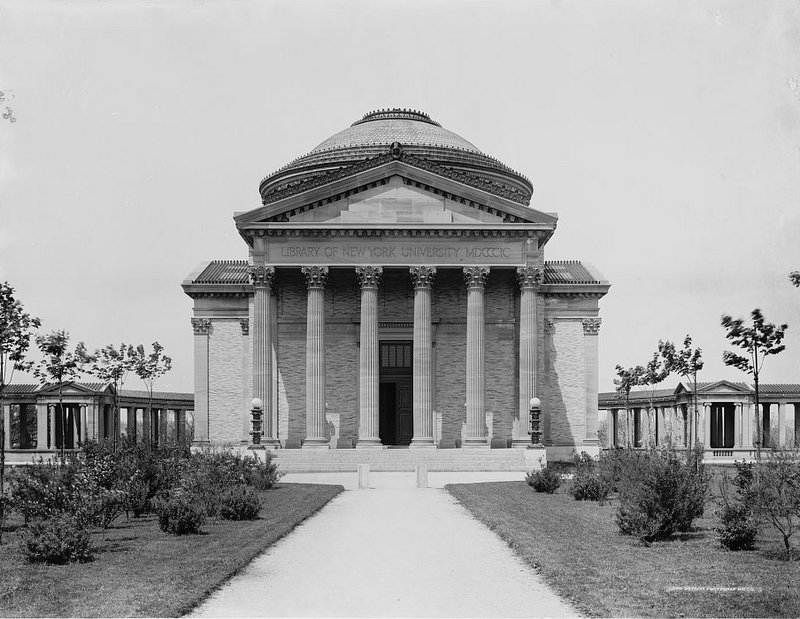 New York University, circa 1900-1910. Via Library of Congress Prints and Photograph Division. Photo by Detroit Publishing Co.
New York University, circa 1900-1910. Via Library of Congress Prints and Photograph Division. Photo by Detroit Publishing Co.
With fall and the back to school season in full swing, Untapped Cites is uncovering the hidden and little known past uses of some of New York City’s colleges. Today we look at Bronx Community College, the first community college to be declared a National Historic Landmark, which is located in the former University Heights campus of New York University. Its Beaux-Arts buildings, which include the Hall of Fame for Great Americans, were designed by the celebrated architect Stanford White of McKim, Mead, and White.
In the early 1890s NYU purchased the Mali Estate, a 40-acre site in the Bronx on a bluff overlooking the Harlem River. At the time, much of the neighborhood around NYU’s buildings in Greenwich Village consisted of crowded tenements and factories. The new site enabled NYU to create a campus of monumental buildings and open lawns with fresh air and river views.
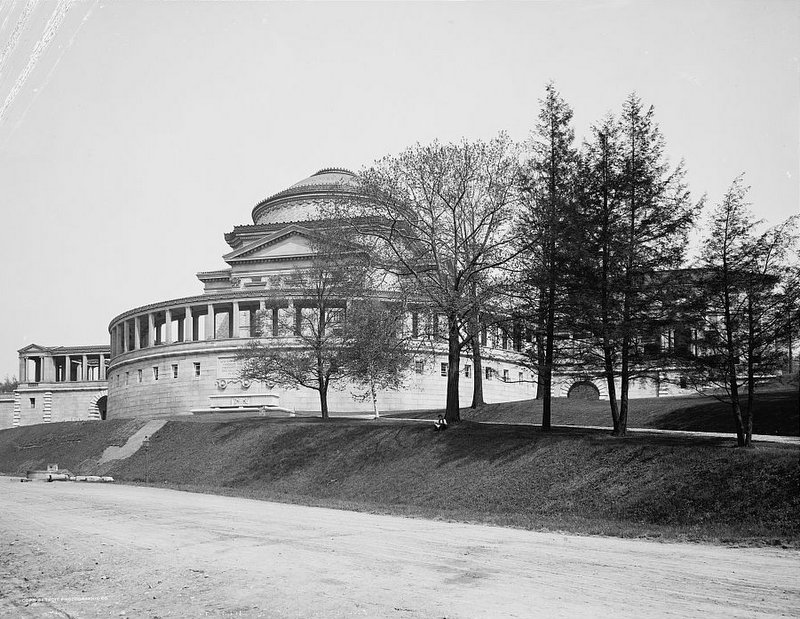 New York University, circa 1900-1910. Via Library of Congress Prints and Photograph Division. Photo by Detroit Publishing Co.
New York University, circa 1900-1910. Via Library of Congress Prints and Photograph Division. Photo by Detroit Publishing Co.
This was part of a larger trend. For similar reasons, Columbia University relocated from Midtown to Morningside Heights in 1897 and City College moved from East 23rd Street to West Harlem in 1907.
Emphasizing the site’s hilltop location, NYU’s new campus was called University Heights, a name that was also applied to the surrounding neighborhood.
 “New York University, New York City” circa 1904. Image via Library of Congress Prints and Photographs Division, Photo by Detroit Publishing Co.
“New York University, New York City” circa 1904. Image via Library of Congress Prints and Photographs Division, Photo by Detroit Publishing Co.
Stanford White‘s master plan for the University Heights campus included several buildings arranged around a quadrangle. Designed in a Beaux-Arts style described as “American Renaissance,” they were completed between 1894 and 1912. The centerpiece of the plan was Gould Memorial Library, which features a dome that has become an iconic symbol of the campus.
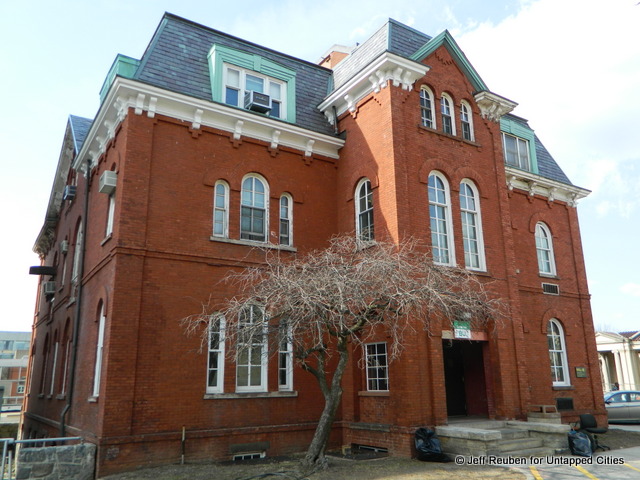 Butler Hall, former Mali Mansion, built about 1859
Butler Hall, former Mali Mansion, built about 1859
In addition to White’s new buildings, NYU adaptively reused existing structures on the property including the Mali Mansion, which was converted into Charles Butler Hall. Butler Hall initially served as a dormitory until larger facilities were built.
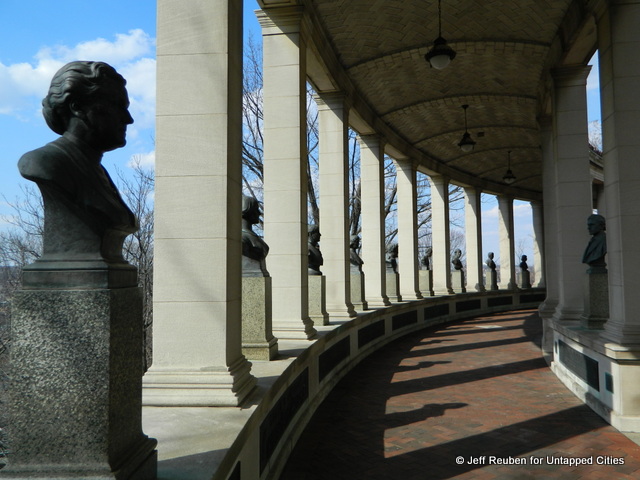 Hall of Fame for Great Americans
Hall of Fame for Great Americans
A few years after the campus opened, NYU established a new institution called the Hall of Fame for Great Americans. Stanford White designed a colonnaded-terrace encircling the rear of the Gould Memorial Library in which busts of famous Americans were placed. Once a popular tourist attraction, the Hall of Fame is largely forgotten but is still located on the site.
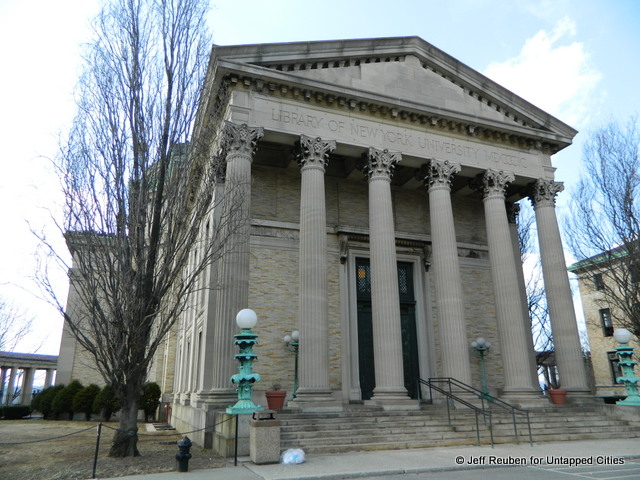 Gould Memorial Library (1900), no longer a library, now offices
Gould Memorial Library (1900), no longer a library, now offices
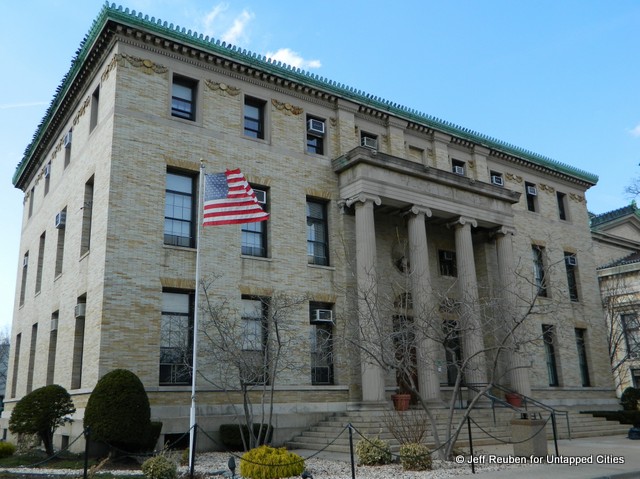 Hall of Languages, first Stanford White building completed at University Heights (1894)
Hall of Languages, first Stanford White building completed at University Heights (1894)
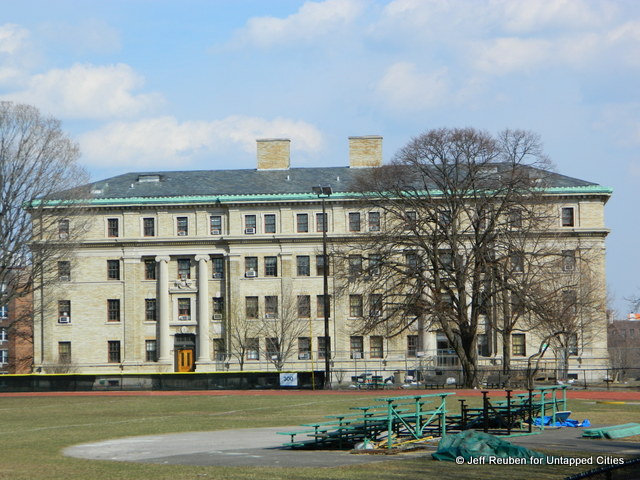 Gould Residence Hall (1896), now classrooms and offices
Gould Residence Hall (1896), now classrooms and offices
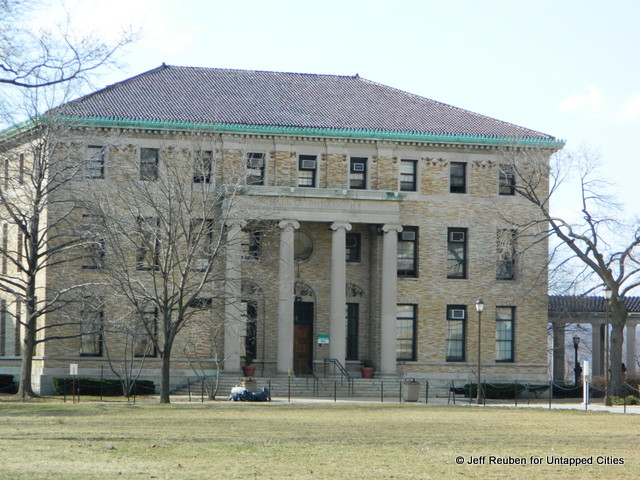 Hall of Philosophy (1912), the campus’ final Stanford White-designed building
Hall of Philosophy (1912), the campus’ final Stanford White-designed building
University Heights in effect became the main campus of NYU, housing the undergraduate programs. However, NYU retained its Greenwich Village buildings for graduate programs, which would prove decisive to the later history of the University Heights campus.
 One of the Later Additions, Modernist Style: Meister Hall, Marcel Breuer & Associates (1967).
One of the Later Additions, Modernist Style: Meister Hall, Marcel Breuer & Associates (1967).
Subsequent to the construction of White’s buildings, NYU’s University Heights campus continued to grow during the next several decades. Later NYU buildings, designed in a variety of architectural styles, are not part of the National Historic Landmark designation.
In the early 1970s, NYU, which was in financial distress, decided to leave University Heights and retrench in the Village. NYU sold the campus to the state Dormitory Authority, which enabled Bronx Community College to move there in 1973.
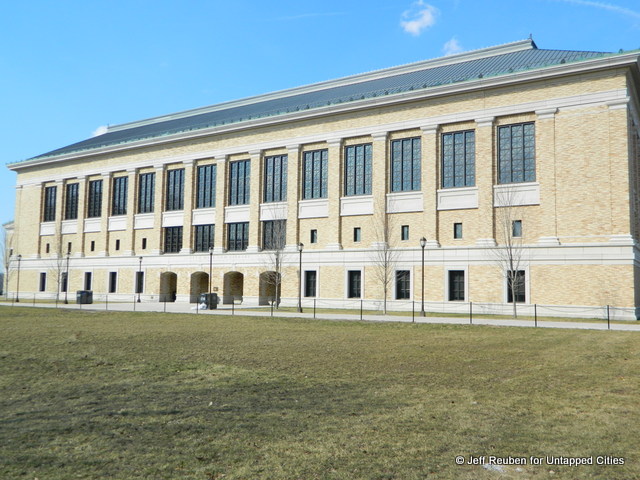 University Heights Campus Newest Building, A Contextual Design: North Hall and Library, Robert A.M. Stern Architects (2012) facing Stanford White’s Quad
University Heights Campus Newest Building, A Contextual Design: North Hall and Library, Robert A.M. Stern Architects (2012) facing Stanford White’s Quad
Bronx Community College up until then lacked a cohesive campus and had been spread across eight buildings in the nearby Fordham Heights neighborhood. Thanks to NYU’s move, Bronx Community College inherited an architectural masterpiece.
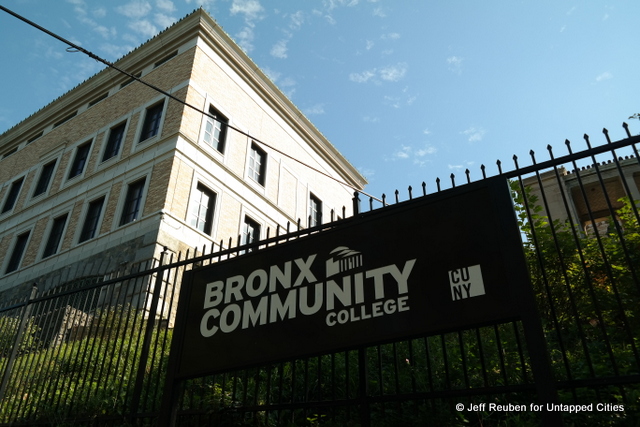
Next, read about NYU’s Vanderbilt Hall, built in 1951, which portended the university’s renewed focus on expanding around Washington Square.





